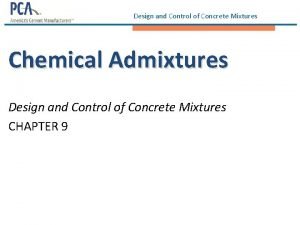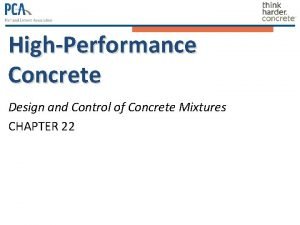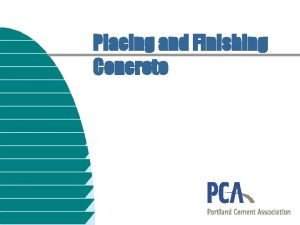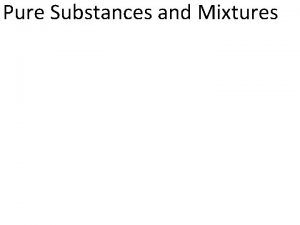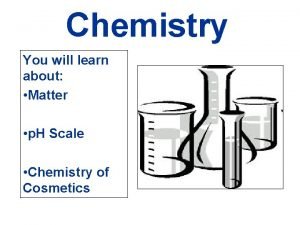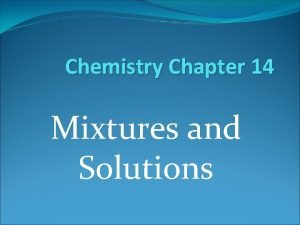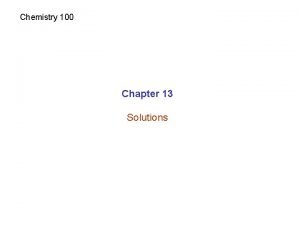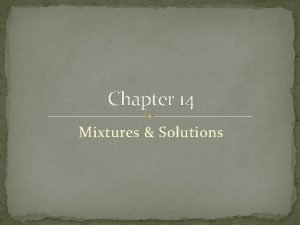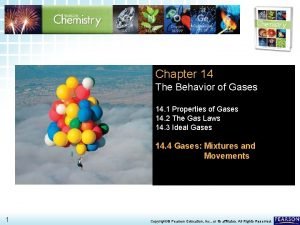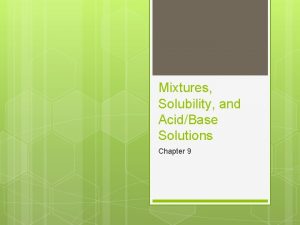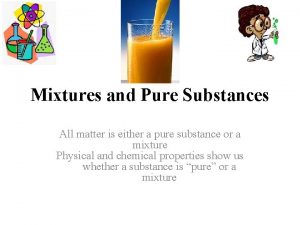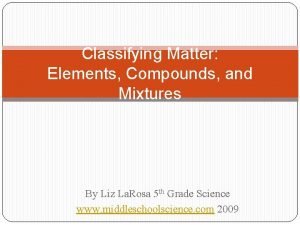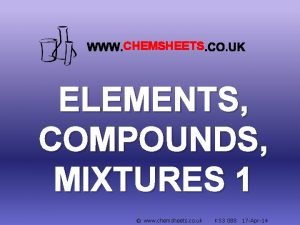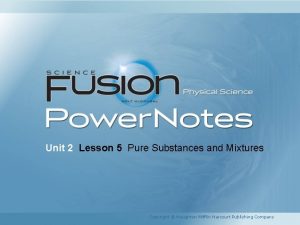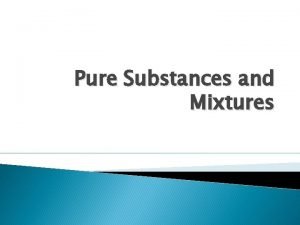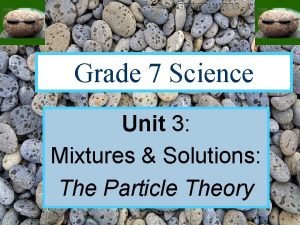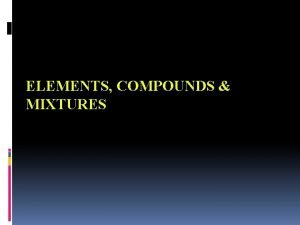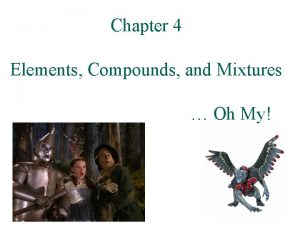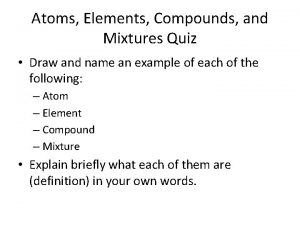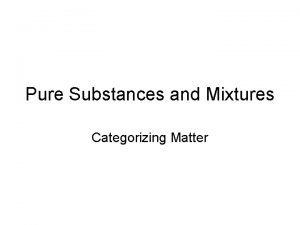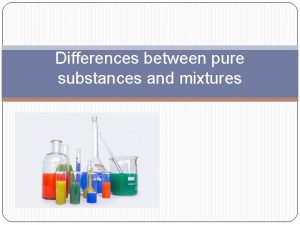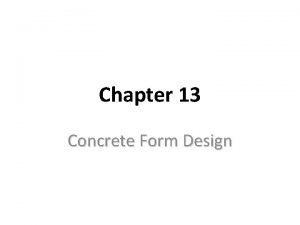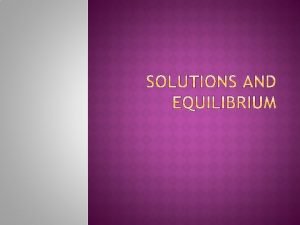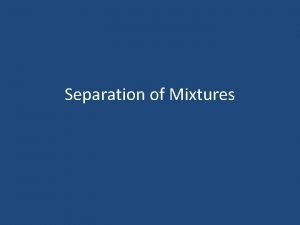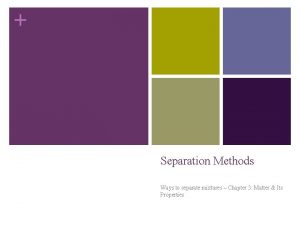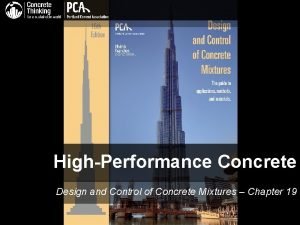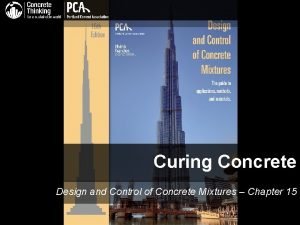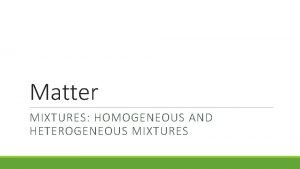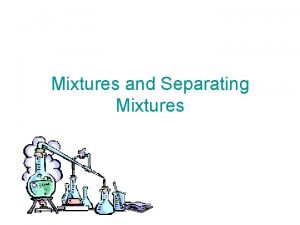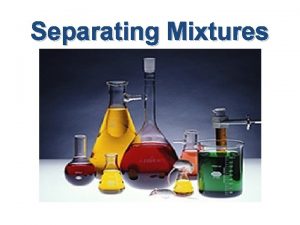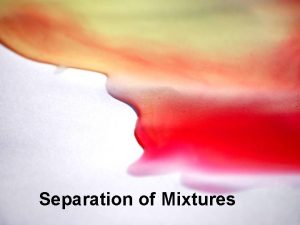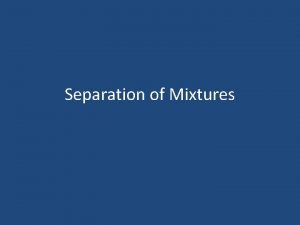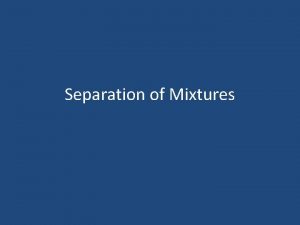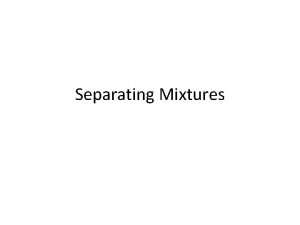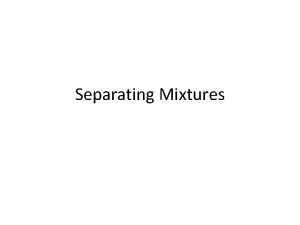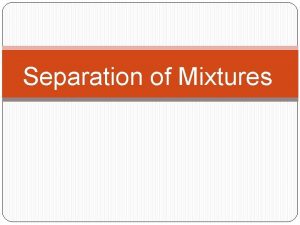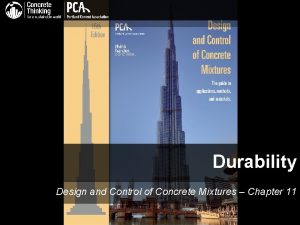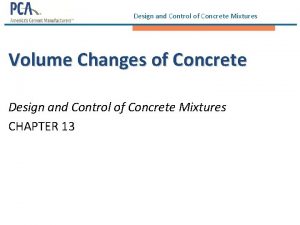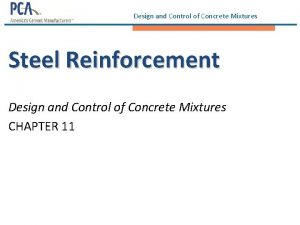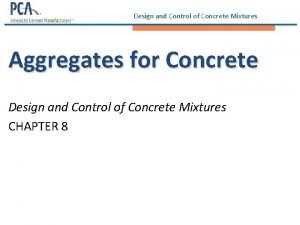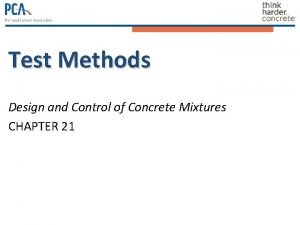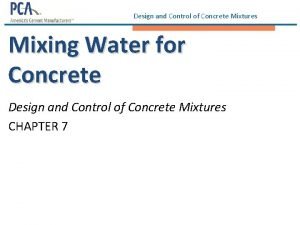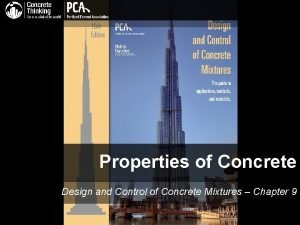HighPerformance Concrete Design and Control of Concrete Mixtures












































- Slides: 44

High-Performance Concrete Design and Control of Concrete Mixtures CHAPTER 22

Overview • • • Introduction to High-Performance Concrete High-Durability Concrete High-Early-Strength Concrete High-Strength Concrete Structural Lightweight Aggregate Concrete Insulating and Moderate-Strength Lightweight Concretes Autoclaved Cellular Concrete High-Density Concrete High-Performance Concrete Construction Self-Consolidating Concrete Ultra-High Performance Concrete

High-Performance Concrete

Characteristics of High Performance Concrete §Enhanced Durability • High abrasion resistance • Low permeability and diffusion • Resistance to chemical attack • High resistance to freeze-thaw, and deicer scaling damage • Resistance to alkali silica reactivity

Characteristics of High Performance Concrete §Enhanced Engineering Properties • High strength • High early strength • High modulus of elasticity • Lightweight and heavyweight • Toughness and impact resistance • Volume stability

Characteristics of High Performance Concrete §Other Enhanced Properties • High strength • High early strength • High modulus of elasticity • Lightweight and heavyweight • Toughness and impact resistance • Volume stability

Materials Used in High-Performance Concrete



High-Durability Concrete Durability issues that high performance concrete can address: • Abrasion resistance • Blast resistance • Low permeability • Low diffusion • Resistance to carbonation • Freeze-thaw resistance • Resistance to chemical attack • Reduced corrosion

High-Early-Strength Concrete High-early-strength can be obtained using one or a combination of the following, depending on the age at which the specified strength must be achieved and on job conditions: 1. Type III or HE high-early-strength cement 2. High cement content 3. Low water-cementing materials ratio 4. Higher freshly mixed concrete temperature 5. Higher curing temperature 6. Chemical admixtures 7. Silica fume 8. Steam or autoclave curing 9. Insulation to retain heat of hydration 10. Special rapid hardening cements

High-Early-Strength Concrete Pyle 2001

High-Early-Strength Concrete Pyle 2001

High-Early-Strength Concrete Grove 1989

Strength of Fast-Track Bonded Overlay Adapted from Knutson and Riley 1987

High-Strength Concrete

High-Strength Concrete Factors in high-strength concrete: • Cement • SCMs • Aggregates • Admixtures



Structural Lightweight Aggregate Concrete

Structural Lightweight Aggregate Concrete ACI 211. 2

Structural Lightweight Concrete Mixture An example of a 28 -MPa (4000 -psi) structural lightweight concrete mixture with an equilibrium density of about 1800 kg/m 3 (112 lb/ft 3), a combination of natural sand gravel, and a lightweight coarse aggregate follows: • 356 kg (600 lb) Type I portland cement • 534 kg (900 lb) sand, ovendry • 320 kg (540 lb) gravel (12. 5 to 2. 36 mm [½ in. to #8]), ovendry • 356 kg (600 lb) lightweight aggregate (9. 5 mm to 600 μm [3⁄8 in. to #30]), ovendry • 172 kg (290 lb) mix water added • 0. 7 L (20 oz) water-reducing admixture • 0. 09 L (2. 5 oz) air-entraining admixture • 1 m 3 (1 yd 3) yield • slump— 75 mm (3 in. ) • air content— 6%

Structural Lightweight Aggregate Concrete • The more absorptive aggregates may require prewetting before use • The use of entrained air can help provide lower density concrete mixtures • Due to lower aggregate density, structural lightweight aggregate concrete does not slump as much as • Normal-weight concrete with the same workability • Structural lightweight aggregate concrete is generally easier to handle and place than normal-weight concrete

Insulating Lightweight Concretes • Insulating concrete is a lightweight concrete with an ovendry density of 240 kg/m 3 to 800 kg/m 3 (15 lb/ft 3 to 50 lb/ft 3) • Made with cementing materials, water, air, and with or without aggregate and chemical admixtures • Cast-in-place insulating concrete is used primarily for thermal and sound insulation, roof decks, fill for slab-on grade subbases, leveling courses for floors or roofs, firewalls, and underground thermal conduit linings

Moderate Lightweight Concretes • Moderate-strength lightweight concrete has a density of 800 kg/m 3 to 1900 kg/m 3 (50 lb/ft 3 to 120 lb/ft 3) • Made with cementing materials, water, air, and with or without aggregate and chemical admixtures • At lower densities, it used as fill for thermal insulation of floors, walls, and roofs: referred to as fill concrete • At higher densities, it is used in cast-in-place walls, floors and roofs, and precast wall and floor panels

Lightweight Concretes Insulating and moderate-strength lightweight concretes can be grouped as follows: Group I: used primarily in insulating concrete Group II: used in moderate-strength lightweight concrete Group III: uniform cellular structure of air voids that is obtained with preformed foam which can meet the requirements of both insulating and moderate strength lightweight concrete


Thermal Resistance of Lightweight Concretes PCA 1980

Strength of Lightweight Concretes

Strength of Lightweight Concretes Mc. Cormick 1967 and ACI 523. 3 R

Autoclaved Cellular Concrete

High-Density Concrete

High-Density Concrete • High-density aggregates such as barite, ferrophosphorus, geothite, hematite, ilmenite, limonite, magnetite, and decreased steel punchings and shot are used to produce high density concrete • Boron additions such as colemanite boron frits, and borocalcite are sometimes used to improve the neutron shielding properties of concrete • Physical properties of heavyweight concrete are similar to those of normal-weight concrete • The procedures for selecting mix proportions for heavyweight concrete are the same as those for normal-weight concrete

High-Performance Concrete Construction • To obtain high performance, it is necessary to use a low water to cementing materials ratio, and, often, a high portland cement content • High-performance concrete has been successfully mixed in transit mixers and central mixers • Consolidation must be vibrated as quickly as possible after placement in the forms

Temperature Control The quality, strength, and durability of HPC are highly dependent on its temperature history from the time of delivery to the completion of curing. In principle, favorable construction and placing methods will enable: 1. A low temperature at the time of delivery 2. The smallest possible maximum temperature after placing 3. Minimum temperature gradients after placing 4. A gradual reduction to ambient temperature after maximum temperature is reached

Self-Consolidating Concrete

Self-Consolidating Concrete Photo courtesy of VDZ

Self-Consolidating Concrete

Self-Consolidating Concrete • Strength and durability of well-designed SCC are almost similar to conventional concrete. • Without proper curing, SCC tends to have higher plastic shrinkage cracking than conventional concrete. • The use of fly ash as a filler compared to limestone as a filler seems to be advantageous; it results in higher strength and higher chloride resistance. , construction time is short and production of SCC is environmentally friendly. • SCC produces a good surface finish.

Ultra-High Performance Concrete

Ultra-High Performance Concrete The properties of UHPC are achieved by: (1) eliminating the coarse aggregates-–only very fine powders are used (sand, crushed quartz, and silica fume), all with particle sizes between 0. 02 and 300 μm (2) optimizing the grain size distribution to densify the mixture (3) using post-set heat-treatment to improve the microstructure (4) addition of steel and synthetic fibers (about 2% by volume) (5) use of superplasticizers to decrease the water to cement ratio–usually to less than 0. 2 -–while improving the rheology of the paste. This picture shows a typical fresh UHPC.

Ultra-High Performance Concrete Perry 1998

Ultra-High Performance Concrete

Questions ?
 Air entrainment
Air entrainment Density of concrete
Density of concrete Split range
Split range Concrete semi concrete abstract
Concrete semi concrete abstract Concrete semi concrete abstract
Concrete semi concrete abstract Is cake ingredients before blending a mixture or solution
Is cake ingredients before blending a mixture or solution Darbying concrete
Darbying concrete Elements, compounds and mixtures worksheet
Elements, compounds and mixtures worksheet Elements compounds and mixtures worksheet
Elements compounds and mixtures worksheet How do you classify uniform and non-uniform mixtures?
How do you classify uniform and non-uniform mixtures? Simplest tool for beating and stirring light mixtures
Simplest tool for beating and stirring light mixtures Mixtures and solutions grade 7
Mixtures and solutions grade 7 Mixtures of organic substances and a medicinal agent are:
Mixtures of organic substances and a medicinal agent are: Heterogeneous mixture def
Heterogeneous mixture def Chapter 13 mixtures and solutions answers
Chapter 13 mixtures and solutions answers Chapter 14 mixtures and solutions
Chapter 14 mixtures and solutions 14.4 gases mixtures and movements answers
14.4 gases mixtures and movements answers Mixtures solubility and acid/base solutions answer key
Mixtures solubility and acid/base solutions answer key What is mechanical mixtures
What is mechanical mixtures Matter classification flow chart
Matter classification flow chart Difference between mixture and compund
Difference between mixture and compund Classifying elements compounds and mixtures
Classifying elements compounds and mixtures Elements and compounds
Elements and compounds Substances and mixtures
Substances and mixtures Fossweb mixtures and solutions
Fossweb mixtures and solutions Mixtures and compound graphic organizer
Mixtures and compound graphic organizer Substances and mixtures
Substances and mixtures Mixture graphic organizer
Mixture graphic organizer Elements compounds and mixtures oh my worksheet
Elements compounds and mixtures oh my worksheet Plasma h2o brain teaser
Plasma h2o brain teaser Elements compounds and mixtures quiz
Elements compounds and mixtures quiz Homo vs heterogeneous
Homo vs heterogeneous Mixtures and solutions quiz
Mixtures and solutions quiz What's the difference between pure substances and mixtures
What's the difference between pure substances and mixtures How is matter classified
How is matter classified Product control and process control
Product control and process control Lac operon positive control
Lac operon positive control Control flow errors
Control flow errors Properties of hardened concrete
Properties of hardened concrete Concrete form design
Concrete form design Articulated concrete mattresses
Articulated concrete mattresses Input output form design in system analysis and design
Input output form design in system analysis and design Are all solutions homogeneous mixtures
Are all solutions homogeneous mixtures Red and blue marbles of same size and mass
Red and blue marbles of same size and mass How can mixtures be separated
How can mixtures be separated
